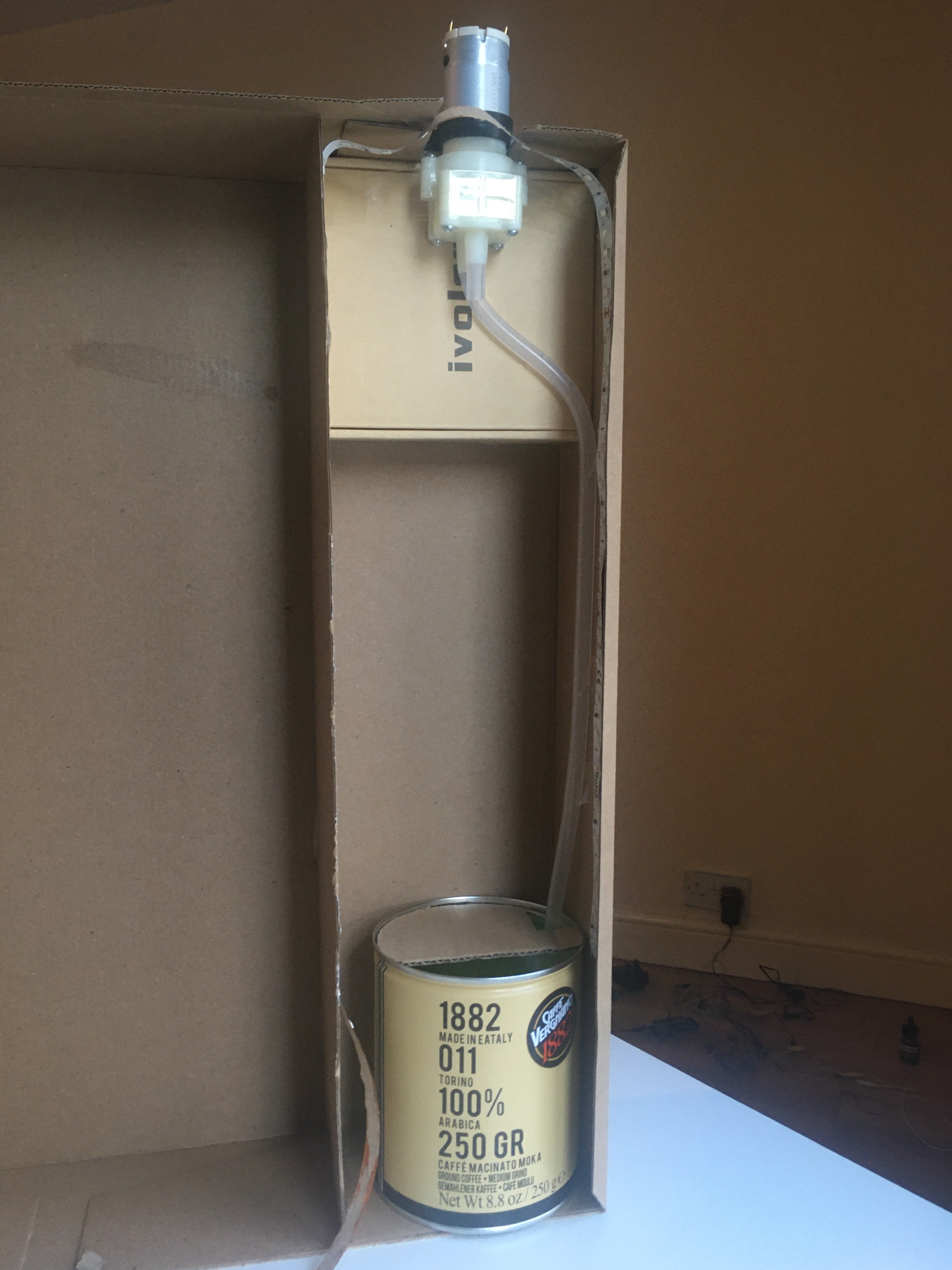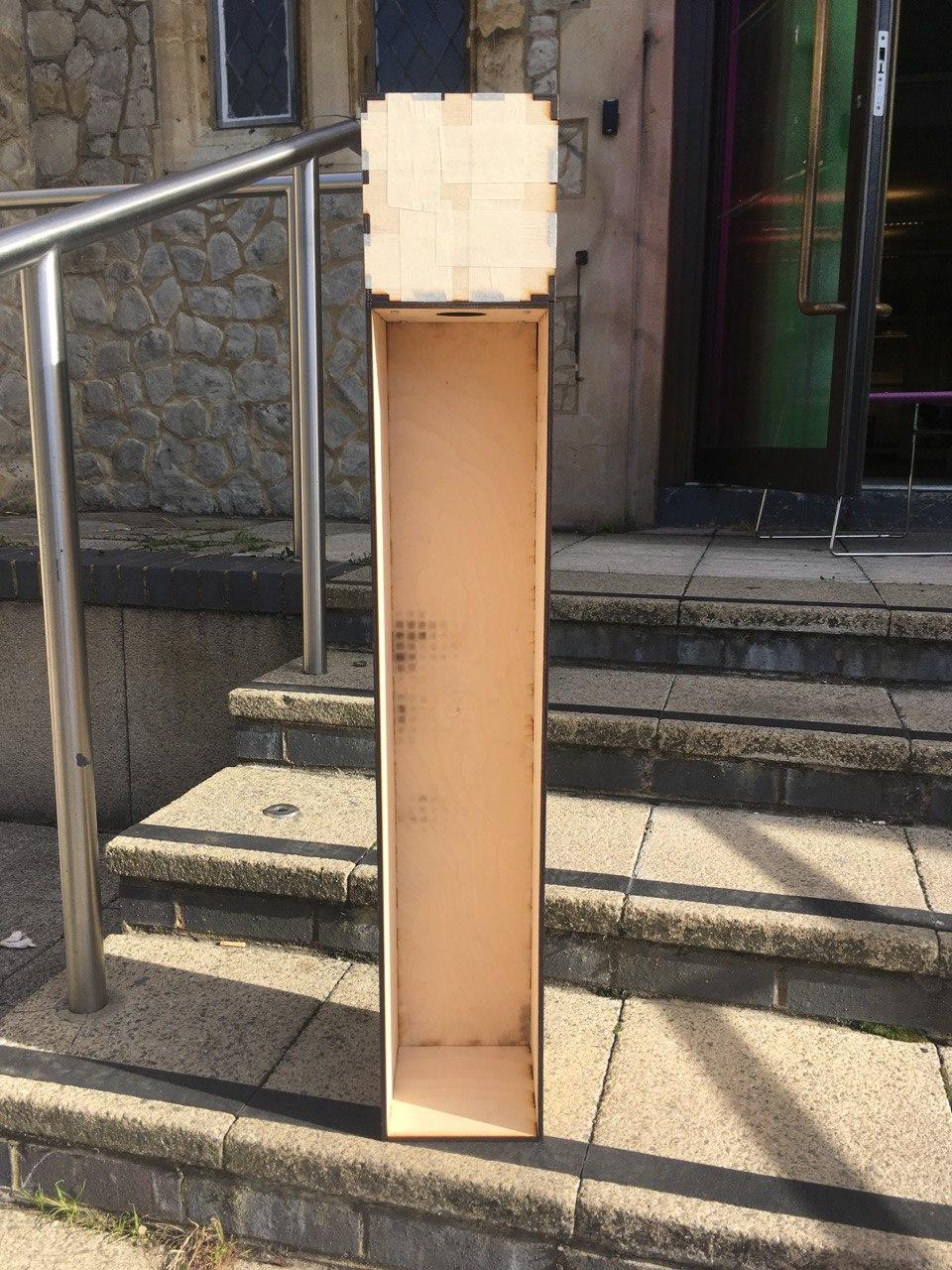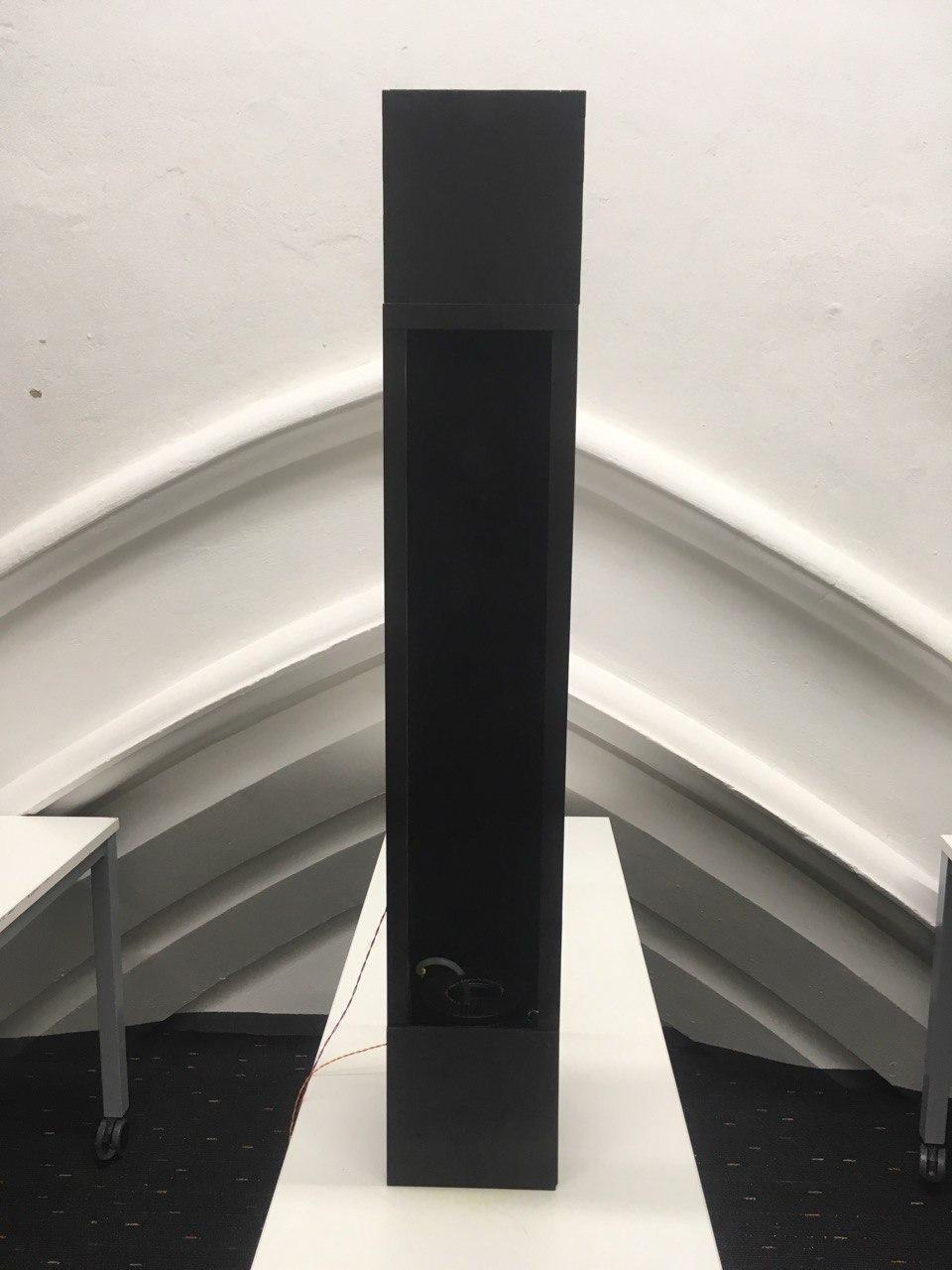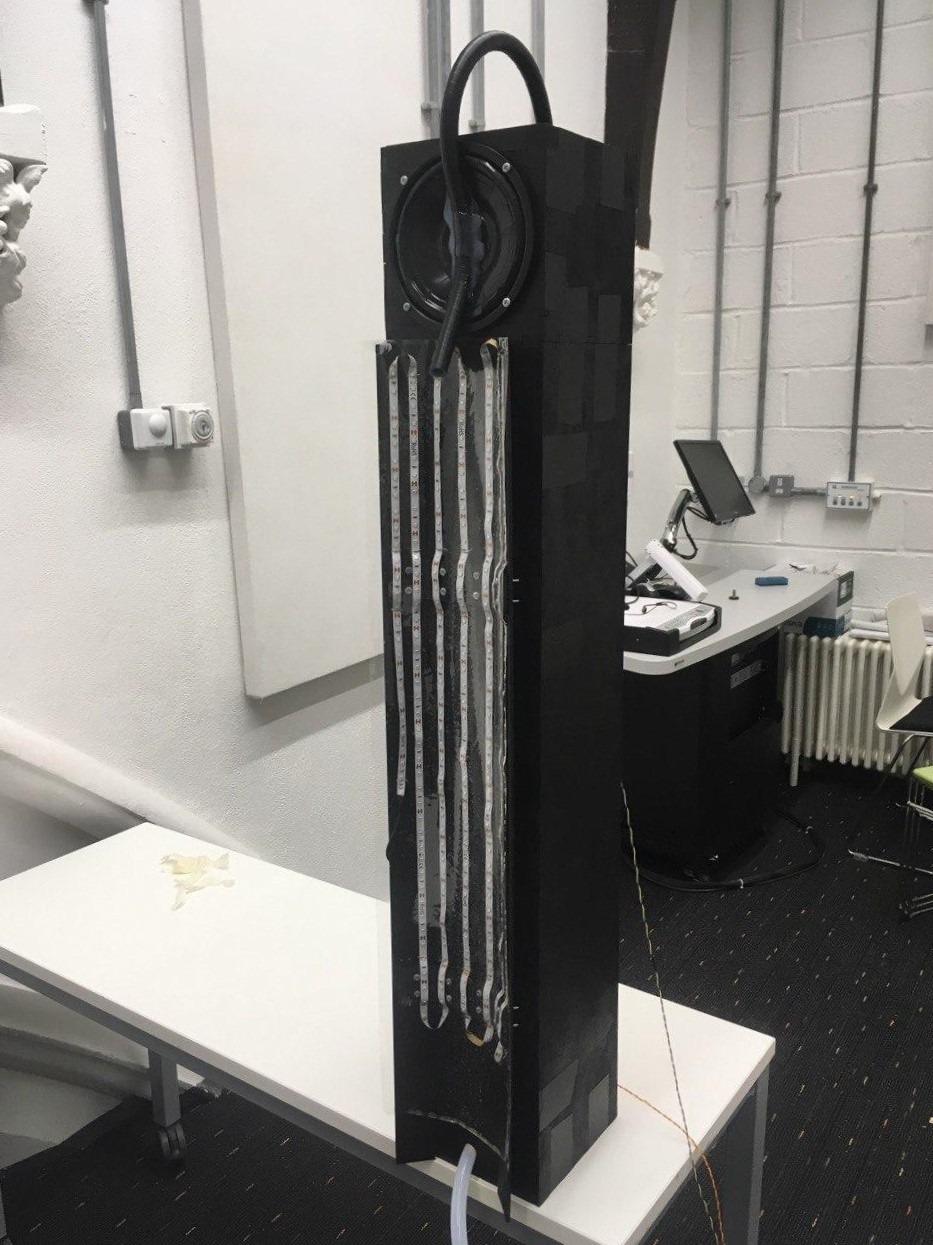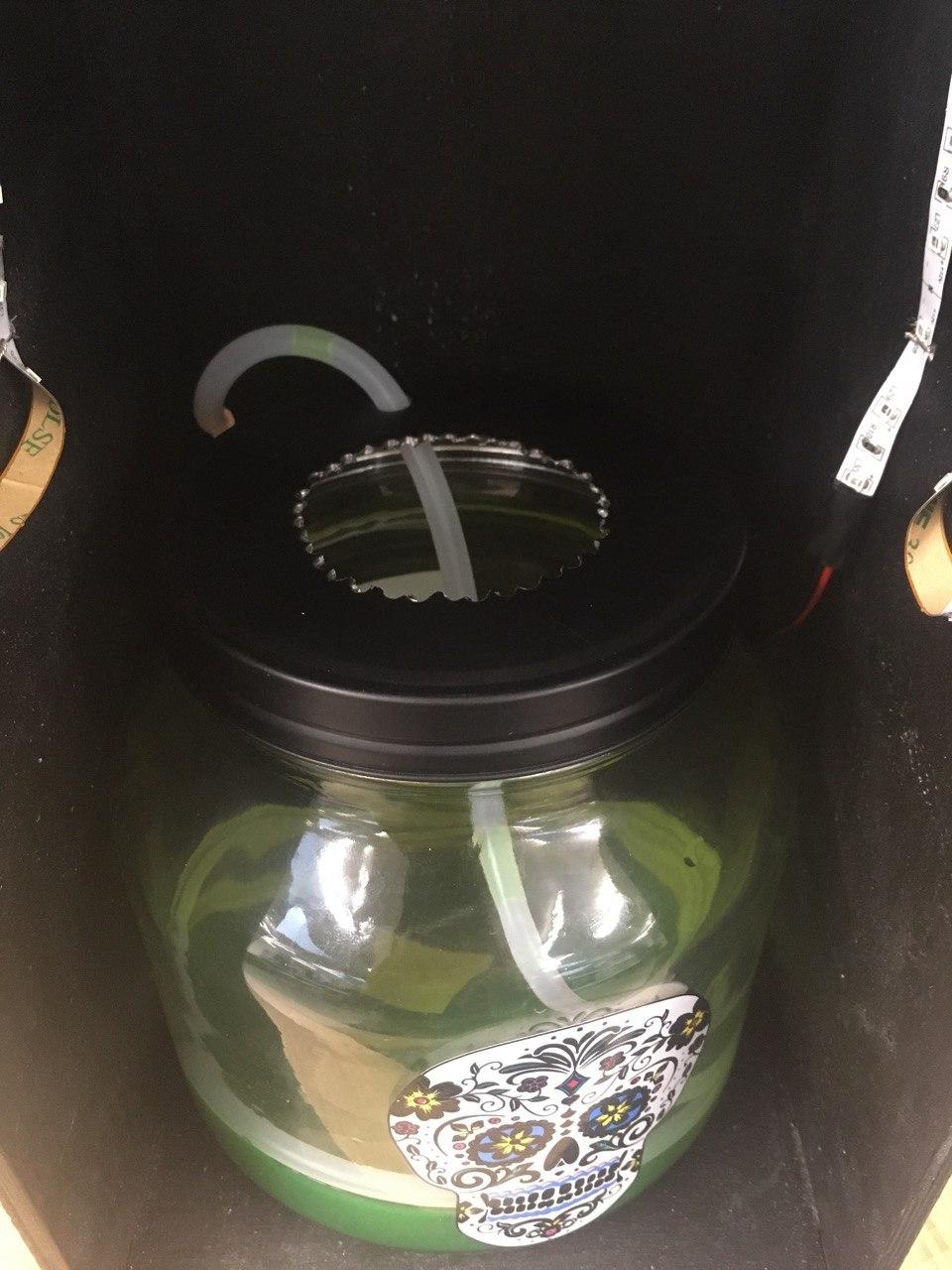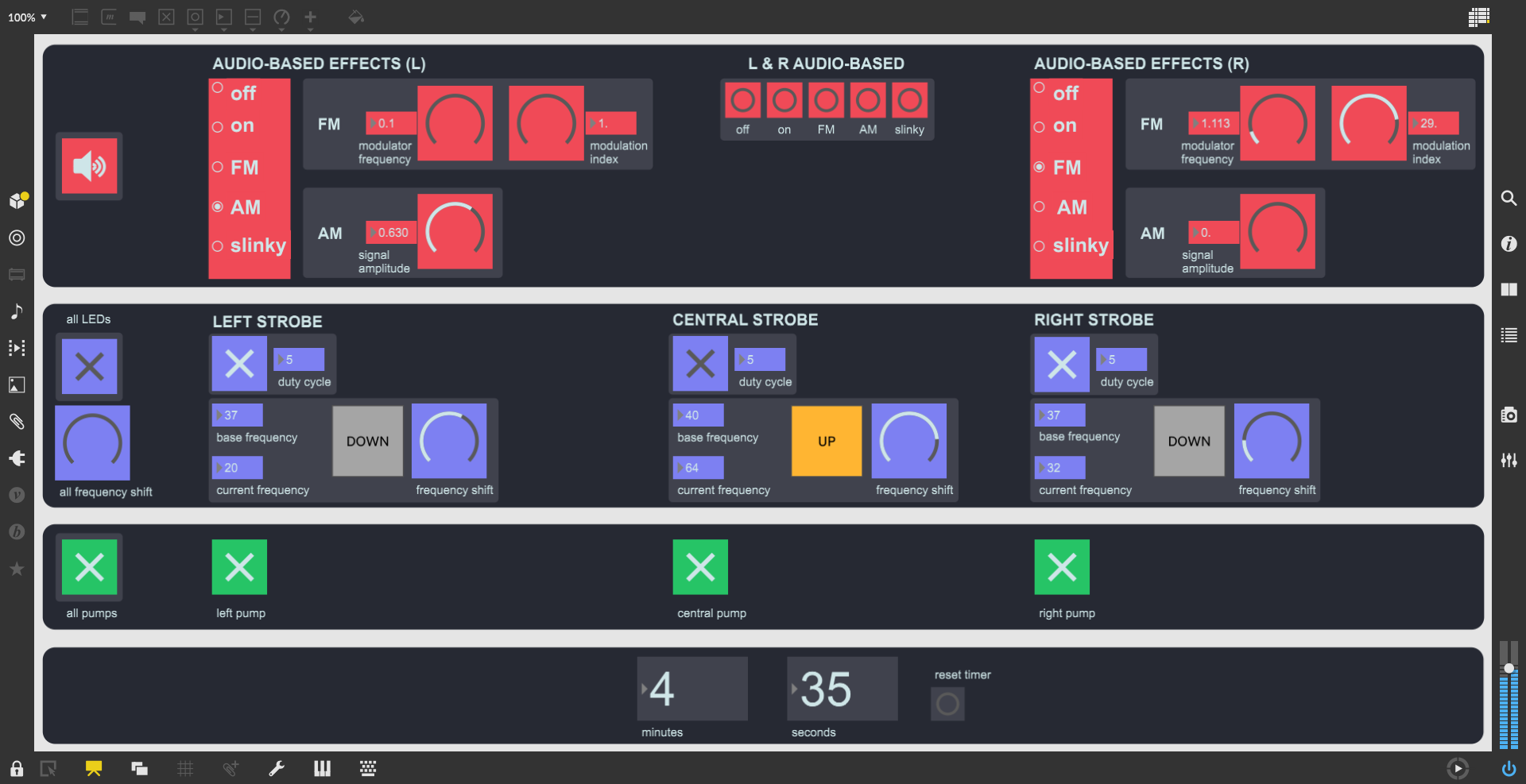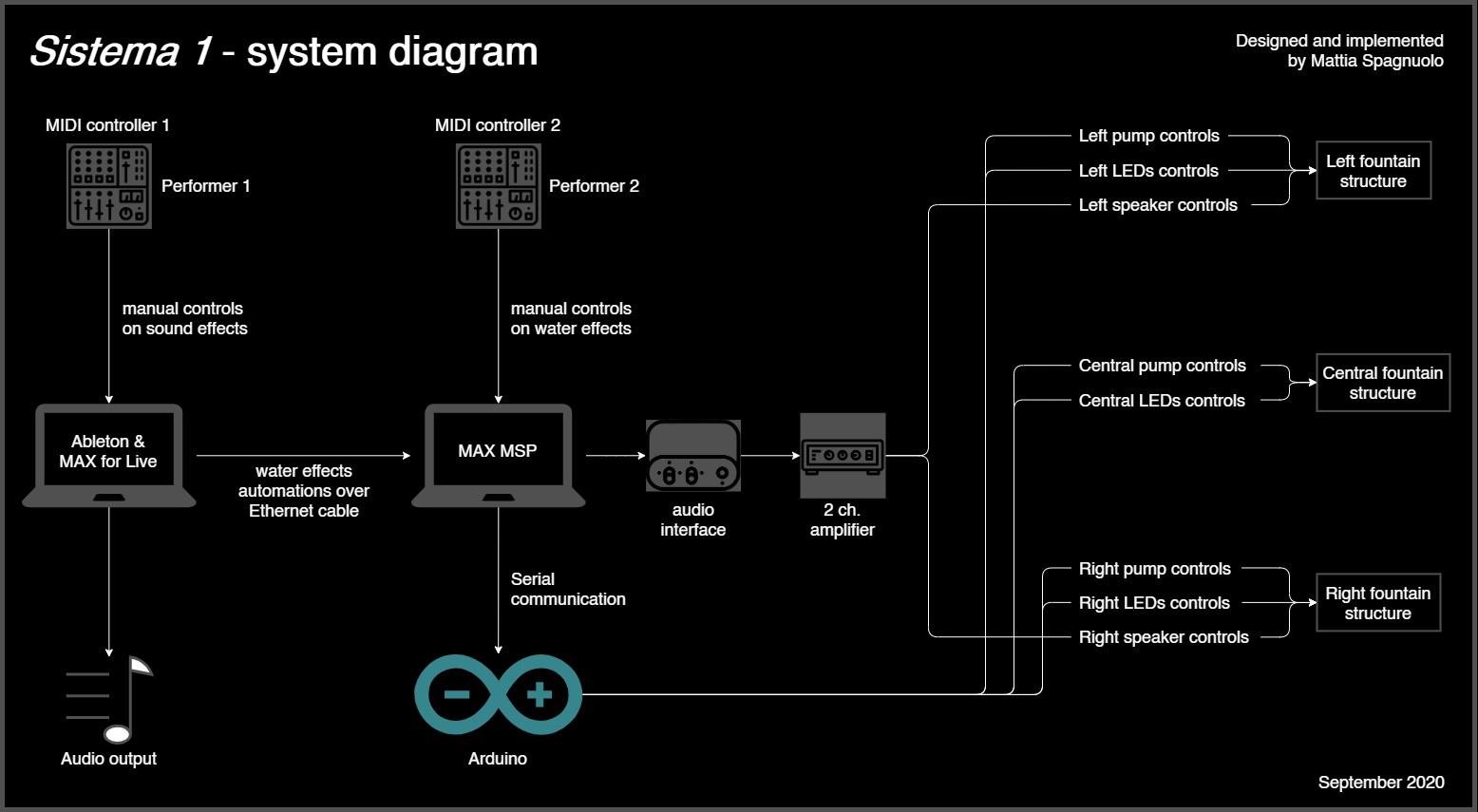Sistema 1
Sistema 1 is a performance that exploits the fallibility of human cognition. By means of a continuous series of visual and auditory illusions that involve water and lights, the audience is left with no time to rationalize what they are experiencing and hence forced to perceive the piece through the eyes of a child, overlooking rationality and embracing naivety. The goal of the performance is to keep the audience trapped within the confines of cognitive System 1, which operates on a “What you see is all there is” basis, as described in the Nobel-prize-winning theory by Psychologist Daniel Kahneman.
Author: Mattia Spagnuolo
September 2020
Concept
It is the oldest trick in the book: a child is shown a coin; the coin disappears; the coin is produced again from behind the child’s ear— magic. As the child grows older, he or she will question this magic, and perhaps even figure out the method behind it: the magician presents the coin with his left hand, pretends to transfer it to his right, shows his young audience his empty right palm, then produces the coin from his left hand which held it all along.
But even as an adult, upon witnessing a magic trick, there is a moment – no matter how brief – before your rationality kicks in, when you postpone your disbelief and allow yourself to be awed by the seemingly magical spectacle at hand. That is, after all, part of the appeal of magic shows for adults.
Sistema 1 aims to elicit that child-like sense of wonder from a rational, skeptical, and predominantly adult audience who has long forgotten the feeling.
The title of the piece, Italian for “System 1”, comes from the Nobel-prize-winning theory presented by Psychologist Daniel Kahneman in his best-selling book, “Thinking, Fast and Slow”. In the very first chapter, Kahneman introduces two characters that animate the human mind:
“System 1 operates automatically and quickly, with little or no effort and no sense of voluntary control. System 2 allocates attention to the effortful mental activities that demand it, including complex computations. The operations of System 2 are often associated with the subjective experience of agency, choice, and concentration.”
These two systems co-exist in the human brain and together help us navigate life; they are not literal or physical, but conceptual. Thinking back on the coin example, you may recognize these systems at play. To process the magic trick, a child makes use exclusively of their System 1: what you see is all there is. On the other hand, an adult predominantly uses their System 2, focusing on understanding the mechanics behind the trick, which make a seemingly impossible thing possible.
Sistema 1 therefore aims to exploit the fallibility of our cognition to keep the audience “trapped” within the cognitive confines of System 1, at least for the whole duration of the piece. To achieve this, an ever-shifting array of visual illusions is produced with the goal of leaving no time for rationality to kick in between an illusion and the next. What Sistema 1 aims to achieve is well summarised with the concept of suspension of disbelief, which is defined as the intentional avoidance of critical thinking or logic in examining something surreal, in order to believe it for the sake of enjoyment.
Although the range of illusions generated by Sistema 1 could be appreciated in form of an installation, I have decided to choreograph a performance in order to amplify the feeling of surprise and wonder evoked in the audience. In fact, an installation allows the public to take their time to appreciate the piece, to walk around it, to attentively examine it and potentially to unravel parts of the system which can be easily concealed in a performative setup. Moreover, a performance allows for the auditory aspect of the piece to greatly contribute to a more immersive and engaging experience, where the audience eventually stops being inquisitive and accepts to be amazed.
Technical details - overview
Admission of guilt: I am breaking Howard Thurston’s number 1 rule in magic – never reveal the secret to a magic trick.
The core principle behind Sistema 1’s illusions is a visual phenomenon called stroboscopic effect. The stroboscopic effect is an illusion of apparent motion or absence of motion that arises when an object is viewed not continuously, but during separate time intervals that succeed one another in a periodic manner.
Stroboscopic effects are a result of persistence of vision – that is, the retention in the viewer’s consciousness of a perceived visual image for a short time after the picture or object producing the image disappears. If the time between successive intervals when the picture or object is viewed is shorter than the visual-persistence time, then the images resulting from the discrete acts of viewing are fused into a single image, and the viewer thinks he continuously sees the picture or object.
Stroboscopic effects are often used in photography. Here, the visual discretization happens thanks to the intrinsic quantized nature of a digital camera: every second only a certain number of frames are captured. This number is usually referred to as frame rate. The relative relation between the frame rate and the cyclic motion of the framed object results in a range of different visual illusions. This way, however, such illusions are only visible through the lens of the camera and not to the naked eye. In the case of Sistema 1, the cyclic motion is that of three separate streams of water and the strobing lights present in each of the three structures that make up the system are what is responsible for the discretization of the observed motion, making the effects perceptible without having to look at them through a camera.
To make the effect more noticeable, the performance is set in a completely dark room. I have mixed the water with highlighter ink and used UV LED lights (aka black lights because they are not visible to the human eye) instead of regular ones. Fluorescent substances – here the highlighter ink – absorb the ultraviolet light and then re-emit it almost instantaneously. Some energy of the black lights gets lost in the process, so the emitted light has a longer wavelength than the absorbed UV radiation, which makes this light visible and causes the material to glow in the dark.
The range of effects which can be achieved through the stroboscopic technique relies on the relative relation between the frequency of the cyclic motion of the water and the strobe frequency of the UV lights. Let fW be the frequency of the cyclic motion of the water and fL be the strobe frequency of the lights. For the stream of water to appear to be totally still, the frequency fW must be equal to fL. If fW and fL are not equal but differ by a small amount, then the frequency of the apparent motion of the water is Δf = fL – fW. In this case, the apparent motion may be much slower than the actual motion and may differ from it in direction. The water will therefore appear to be frozen mid-air, to move downwards or to upwards depending on Δf.
The three structures that make up the system operate similarly and are based on the very same principle. Each of the two side structures, however, integrates a speaker cone to which the water tube is attached. This allows for the movement of the stream of water to happen on a plane parallel to the viewer rather than simply on a straight vertical line as for the central structure. By playing a low-frequency sinusoid through the speaker the water is set into a cyclic motion at frequency fW = fS (frequency of the sinusoid coming out of the speaker). Adding a layer of complexity in the motion of the water allows for further expressiveness. By dynamically changing not only the frequency fW = fS, but also the amplitude of the soundwave (namely the volume of the speakers) a whole new set of visual effects can be achieved.
The making of Sistema 1 was a long process of empirical experimentation which involved a lot research, many trial-and-error iterations and plenty of fine-tuning. It was only by getting to know the inner workings of the system to its finest details that I was able to conceive the concept of my work and consequently the feelings I wanted to evoke in the audience as they experience the piece.
Technical details - physical
Sistema 1 consists of three water fountain structures, where the ones on the sides are identical and differ from the central one both in the way they are built and in the range of effects that they produce. Looking back at the whole making process, I take pride in seeing how they evolved from small cardboard prototypes laying on my bedroom floor to custom-made plug-and-play robust structures. It took me many prototyping iterations before getting to a reliable working system. What follows is a slideshow of the stages that I went through.
Many were the challenges that I encountered “in the physical world”, but out of all of them one was particularly tricky to get around: the splashing of the water. After having had to mop the floor many times, I eventually solved the problem in the following way:
- For the side structures I made use of big buckets that would collect the water and convey the splashed water back into it.
- For the central structure I have 3D-printed a cone that I then placed inside of the jar that I used for water collection. This way, the stream of water would break and land much more gently and quietly, drastically reducing the splashing.
Moreover, to prevent the LED strips to be damaged by the water, I have covered them with acetate sheet in all three structures.
Given that Sistema 1 is a performative piece, another important challenge that I had to face was to build a physical system that would be not only sturdy and resilient, but also quick and easy to set up and to take down. In its first stages, the system was painfully slow to put together and it was very easy to make a wrong connection while plugging the cables, which would then require to debug the connections or to undo them altogether. My solution to that was to fabricate custom-made cables with different color patters. Each color pattern identified a different bit of the system (i.e. the speaker, the water pump, or the LED strips). I then entwined the cables so that each structure would only have one bigger cable with all its needed connectors.
The following pictures are the performance final setup.
Technical details - digital
Sistema 1 was developed with the use of MAX MSP and Arduino. The MAX patch serves as a controller to activate the water illusions on each of the three fountain structures. All the controls result in a message passed to Arduino through the Serial port. Arduino interprets the message and uses it to control the pumps and the LED lights of each structure.
The MAX patch is also responsible for controlling and sending the low-frequency sinusoids to the side structures’ speakers. The signal is outputted thought an audio interface and amplified with a stereo amplifier to drive each of the two speakers.
Technical details – audio
The music for Sistema 1 was entirely composed by my dear friend Giovanni Corgiat. After I told him the concept behind my piece and what I wanted to elicit from the audience, he worked towards a composition around the concept of illusion. Just as sight is deceived by the water, hearing is deceived by sound. In psychoacoustics, for instance, there is a so-called entrainment effect, whereby the human nature is inclined to follow regular rhythms. Taking this into account, part of the music has been composed with simple rhythms with ever-changing shifts in timing. Multiple different rhythms float back and forth from a regular one, until it becomes impossible to detect a clear metronome. Moreover, especially at the beginning of the performance, it is possible to detect a thematic cell which appears and disappears with no stable pattern.
All the music has been composed with heavy bass frequencies and performed at high volumes to get the audience into a full-body, all-encompassing experience.
Technical details - communication and choreography
Once Giovanni finished the composition, we had to work together to make the system I built interact with the audio track. Given the irregular and fragmented nature of the audio, we could not rely entirely on manual controls during the live performance, or the synchronization could be compromised. Therefore, we devised a system of communication that would automatically trigger some control commands to the fountain structures as the track progressed. To do so, we added a MIDI track on Ableton Live that, through Max for Live, would send UDP messages from Giovanni's laptop to mine through an Ethernet cable. The automations allowed us to choreograph many visual effects with the water that would always be synchronized with the elements of the audio track.
However, we wanted to leave a live component for the performance to give room for more expressiveness and to make each performance somehow unique. During the performance, both Giovanni and I were able to exert control over some of its aspects. Through the use of a MIDI controller, I was able to manually control the water illusions during certain bits of the performance. Giovanni was also applying further effects on the audio component of the piece live.
The picture below is the system diagram that illustrates the full design of the system.
The following video is a short extract from the performance.
Future developments
Overall, I am very happy with Sistema 1. I encountered plenty of challenges, some of which were expected and others which were not, but I managed to overcome them all. The system is now reliable and quite easy to setup. I feel like I have learned a great deal by designing and building the system, iteration after iteration. Having to deal with both the digital and the physical side of it has been challenging, but most definitely worth it.
The performative aspect of Sistema 1 was also a great learning experience for me. Once the system was built and ready, still having to both choreograph a performance and to perform in it has been an opportunity to learn, given that I had never done it before.
However, I do not see this as the end of this project, if not as the beginning. There is still room for improvement in some small structural details of the fountains, such as the materials, the wiring, and the splashing of the water. With further iterations, the system can be made into a modular plug-and-play apparatus which can be utilized in various creative scenarios.
I believe that the performance itself is already quite powerful and captivating, but Giovanni and I plan to make it longer to explore further possibilities and to unveil its illusions over a longer period of time.
Special thanks
To Giovanni Corgiat Mecio, a great musician, composer, performer, but most importantly a great friend, for flying from Turin (Italy) to London to participate to this work with his incredible sounds. Expect much more from the two of us.
To Paolo Rucci, for somehow making a great video out of some underexposed and out-of-focus footage (low light + the strobing makes filming Sistema 1 incredibly painful).
To Giulia, Chloe, Karen and Gero, for making me feel part of the HatchLab Dream Team.
To Clemence and the rest of the exhibition organization team I have had the pleasure to work with. We managed to pull off both a physical and digital exhibition in times of world crisis. Cheers to us!
To our teachers at Goldsmiths, who did not only teach us, but supported us and encouraged us in our artistic practice.
And last, but not least, to every single member of this year’s incredible cohort. To all the emotions we have shared. I will always remember fondly of the time we spent together.
References - concept
The background research and concept of Sistema 1 is entirely based on the book “Thinking, Fast and Slow” by Daniel Kahneman.
“Thinking, Fast and Slow” is a best-selling book published during 2011 by Nobel Memorial Prize in Economic Sciences laureate Daniel Kahneman. It was the 2012 winner of the National Academies Communication Award for best creative work that helps the public understanding of topics of behavioral science, engineering, and medicine.
The book summarizes research that Kahneman performed during decades, often in collaboration with Amos Tversky. It covers all three phases of his career: his early work concerning cognitive biases, his work on prospect theory, and his later work on happiness.
The main thesis is that of a dichotomy between two modes of thought: "System 1" is fast, instinctive, and emotional; "System 2" is slower, more deliberative, and more logical. The book delineates rational and non-rational motivations/triggers associated with each type of thinking process, and how they complement each other, starting with Kahneman's own research on loss aversion. From framing choices to people's tendency to replace a difficult question with one which is easy to answer, the book summarizes several decades of research to suggest that people have too much confidence in human judgement.
References - technical
- Seeing sound with light: strobes and resonance
- Amazing Water & Sound Experiment
- Aquarius - The Amazing Bending Water Fountain! | Desk Gadgets
- Levitating Water Drops - My RGB Time Fountain Project
- RGB Time Fountain V2 - Levitating Water Illusion (Anti-gravity Water Drops) 2020
































































